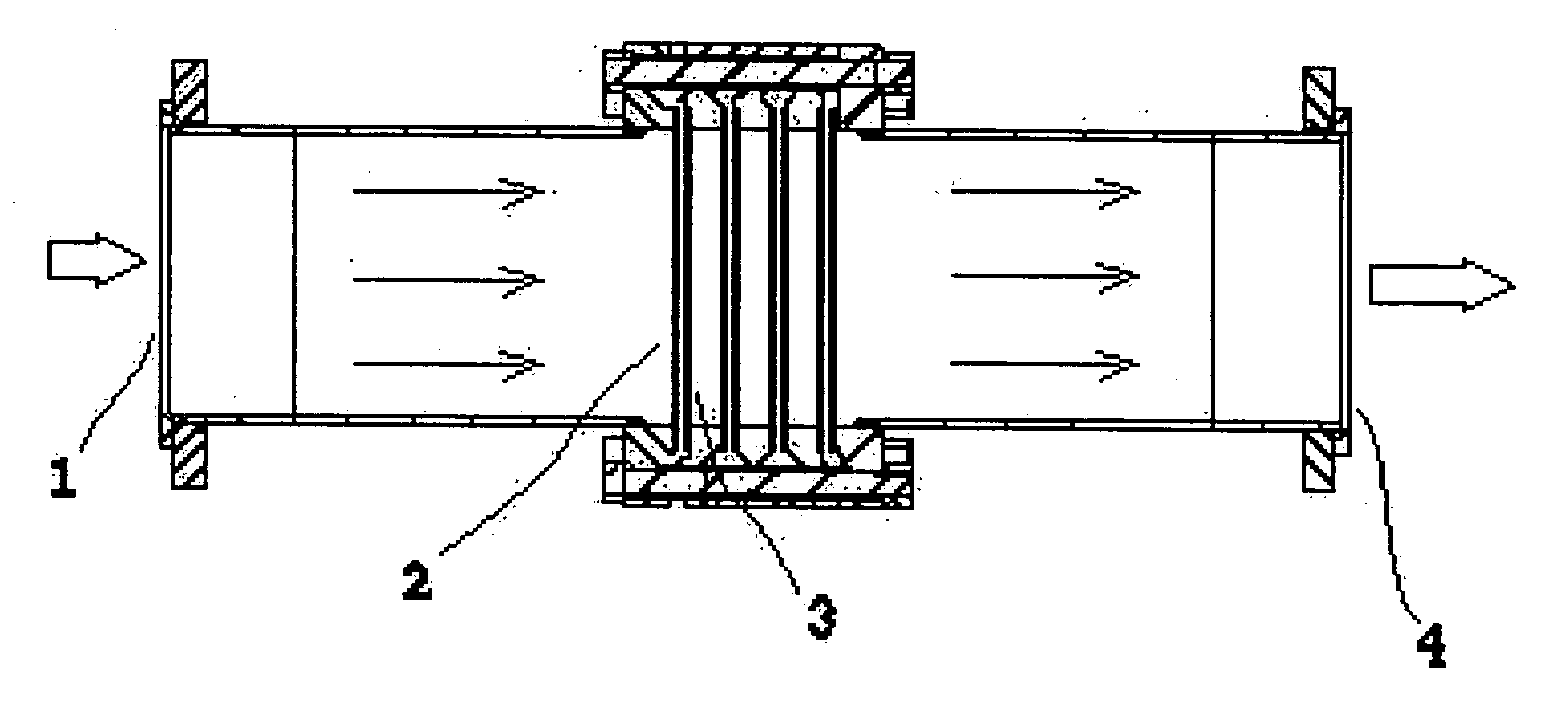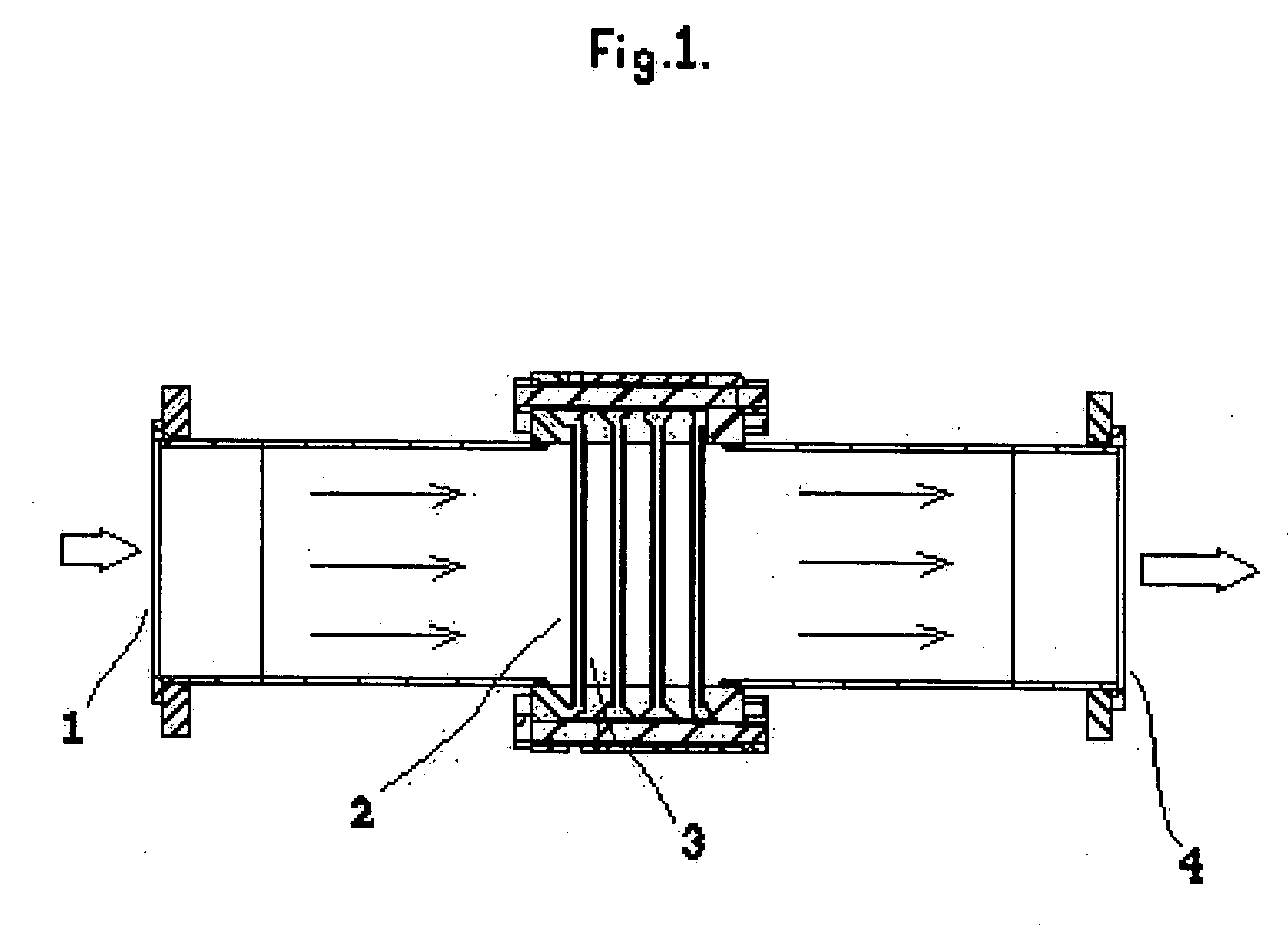Electrolytic cell
a technology of electrolysis and cells, applied in the field of electrolysis cells, can solve the problems of inefficient processes, unsatisfactory problems, and long time-consuming treatment of waste water containing microorganisms, and achieve the effects of increasing turbulence, reducing turbulence, and high flow rate of water stream entering the cell
- Summary
- Abstract
- Description
- Claims
- Application Information
AI Technical Summary
Benefits of technology
Problems solved by technology
Method used
Image
Examples
example 1
[0062] Surface sea water containing plankton, coliform, and heterotrophic bacteria having a conductivity of 5 S / m was pumped into a tank of 800 litres and at the same time filtered through a cotton cloth and a 20 μm filter. Reference organisms of Tetraselmis and Isochrysis (both flagellates) were added together with a non-patogenic colony of the coliform E-choli bacteria. Control samples were taken.
[0063] Both the anodes and cathodes used were expanded niobium plates coated with conductive boron-doped diamond (BDD). The electrochemical cell comprised six of these BDD electrodes arranged for crossflow passage of the natural sea water in a titanium tube having an inner diameter of 70 mm. The anodes and cathodes were arranged in pairs with a small space of 4 mm between anode and cathode of the same pair and a distance of 41 mm between adjacent pairs.
[0064] The water treated in the electrochemical cell was fed through the cell at a flowrate of 10 m3 / h (175 l / min) and a current density...
example 2
[0065] Natural surface sea water (from the west coast of Sweden) was prefiltered using a net and pumped into a tank of 800 litres. Control samples were taken.
[0066] The electrodes and the cell were the same as in example 1. The water was run at the same flow rate and current density, current and power were as in example 1. The treatment resulted in 84% killing of natural occurring zoo planktons and a 93% killing of naturally occurring phytoplanktons. Analysis was made by light microscopy. No THM formation occurred.
example 3 (
Reference)
[0067] An electrolytic cell as used in Example 1 but with a porous separator in between the anode and the cathode was prepared. 0.5 mm thick woven mesh with 30% opening made of polypropylene was used as the separator. The water to be treated was flown from the cathode to anode. The electrolysis examination was performed under same conditions as in example 1 but the flow rate could not attain a flow rate of 10 m3 / h but was only up to 3 m3 / h. Same electric current as example 1 was used. Several ppm of THM (tri-halo-methane) was shown to be formed in the sea water.
PUM
| Property | Measurement | Unit |
|---|---|---|
| Electrical conductivity | aaaaa | aaaaa |
| Flow rate | aaaaa | aaaaa |
| Fraction | aaaaa | aaaaa |
Abstract
Description
Claims
Application Information
 Login to view more
Login to view more - R&D Engineer
- R&D Manager
- IP Professional
- Industry Leading Data Capabilities
- Powerful AI technology
- Patent DNA Extraction
Browse by: Latest US Patents, China's latest patents, Technical Efficacy Thesaurus, Application Domain, Technology Topic.
© 2024 PatSnap. All rights reserved.Legal|Privacy policy|Modern Slavery Act Transparency Statement|Sitemap


